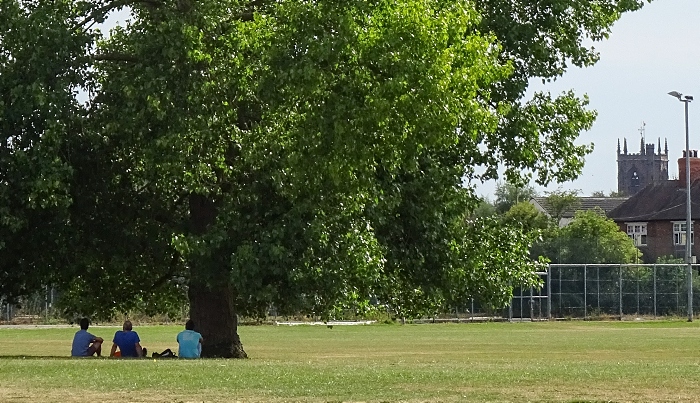
Typically, tree surveys are carried out on either private or public landscapes.
The main purpose of having a tree survey carried out is to determine any useful information about the trees in the area.
This information will then be given to homeowners or property managers, providing them with the ability to make more informed decisions going forward.
The findings of a tree survey will usually play an integral part in determining and deciding what actions to take regarding the trees on the land.
Who Carries Out Tree Surveys?
A tree survey can often bring up a lot of different types of information.
Usually, it will be carried out by a professional arborist or tree surgeon who will work to the BS5837 British Standard.
You can find out more about tree surveys and other professional tree services here.
Tree surveyors are qualified and experienced professionals who will often survey hundreds or even thousands of trees per year.
What Information Can a Tree Survey Bring Up?
A professional tree surveyor or arborist will judge trees in line with existing standards to determine whether or not the trees should stay on the land.
When you have a tree survey carried out, you will be provided with a wide range of information on the trees including the number of trees that are present, the species of each tree, crown radii for the different crowns, the measurements and diameters for each tree, the height of each tree, and unique reference numbers for each tree present.
There will also be more information provided about the health of each tree and its condition both physiologically and structurally.
You may also get further recommendations for tree maintenance and management for any trees that are going to remain present on the land.
When is a Tree Survey Needed?
If you are planning any building or development work in an area where trees are present, then getting a tree survey carried out is a legal requirement because of certain protected tree species.
This is due to the Wildlife and Countryside Act 1981, which is in place to ensure that protected tree species are kept safe from both accidental and intentional removal.
A tree survey will provide you with further information regarding each tree present on the land, including whether or not it belongs to a protected species and can be removed legally.
If you are planning to build a new property, extend or renovate an existing property, or construct new ancillary buildings at a current property, then a tree survey will usually be recommended.
Tree surveys are also often required in situations where service lines are being moved or access will be change.
When surveying, this should include any existing trees that are already on the site, along with trees located within 12 metres of the new building, service line or access point.
If you are planning a project where you are building a new property or other construction, then all trees should be surveyed up to and including within 12m of the boundaries of the property.
Which Trees Are Included?
When having a tree survey carried out, all of the trees that are included on the plan should be shown.
Trees should be surveyed regardless of their species or protected status as they can often be a material consideration for any planning application.
Any tree that has a stem diameter of more than 75mm when measured at 1.5m above the ground level should be included in the majority of planning application surveys.
Tree Risk Surveys
If you are responsible for the maintenance and care of trees on your land, then you might be considering a tree survey for tree safety purposes.
In this case, a tree condition survey or tree risk survey can be one of the best options to go for.
This survey involves carefully checking every tree for diseases or defects, providing you with further information to help you make the best decision regarding the next steps needed to keep risks to a minimum.
Tree risk surveys may need to be carried out on a regular basis if you are located in a high-risk area.
Experts recommend that in this situation, the tree risk surveyed are staggered throughout the year, as this will allow you to consider the impact of the seasonal changes on the trees.
Tree Surveys and Subsidence
In some cases, subsidence can be the result of trees that are located too close to a property.
This occurs due to ground movement that may happen with the roots of the tree draw moisture from the soil.
There is often a higher risk of subsidence during warmer, drier times of the year when the soil’s moisture levels are lower.
When subsidence has occurred in a property, a tree survey might be an ideal course of action to determine which trees are leading to this outcome, giving you the information that you need to plan the best next steps to prevent the problem from getting worse over time.
Reasons to Have a Tree Survey Carried Out
Even in areas where you may not be legally required to have a tree survey carried out, such as there not being any protected trees in the area, there are lots of reasons why having one can be a good idea.
Building New Structures
A tree survey may be required or recommended before any changes are made to a landscape or property.
For example, if you are interested in building an extension on your property that is located close to trees, then the information that you are provided with from a tree survey can be a useful thing to have when you plan the design.
Hazard Prevention
A tree survey can also provide you with further information about any potential hazards that a certain tree or number of trees in the area might pose.
It gives you the chance to learn more about the health of the trees and determine how to move forwards.
Whether you’re building a new property, extending a current one, or working on some other kind of building project, a tree survey can be a useful part of the process to help you determine the best decisions to make regarding the trees present.

















Recent Comments